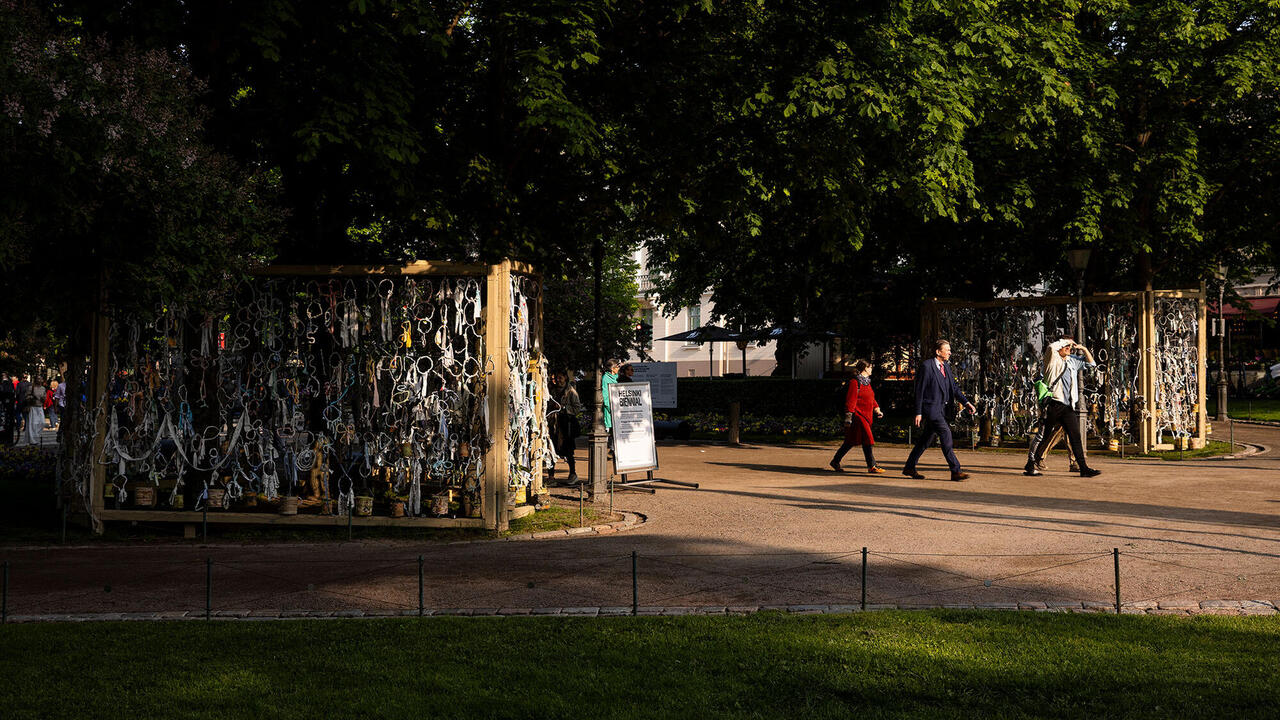Station House Opera
According to Baudelaire, Delacroix once said that listening to Chopin's music was like listening to the song of a 'brightly coloured bird hovering over the horrors of a bottomless pit'. While such an observation may be metaphorically true of most interesting art, it is almost literally true of some performances by Station House Opera. Since the early 80s, participants have been suspended from tall buildings, dangled from ropes, platforms and bridges, or swung precariously high above the ground. In this respect, Roadmetal, Sweetbread (1998) is not typical of their work. The scale is modest and contained, performed within a single room by two people - Julian Maynard Smith and Susannah Hart, who co-wrote the piece. But for all its smallness of scale, it is strikingly dynamic, confusing, funny and alarming.
The most immediate problem with Roadmetal, Sweetbread is that it is unbelievably difficult to describe, which makes you feel a little silly because on one level it seems so simple: two people, one male and one female, run around and do various things to themselves and each other at one end of the room, whilst a video projection on the wall behind them shows the same two people running around and doing pretty much the same things. The things they do are straightforward - standing, sitting, walking, crawling, falling, eating, drinking, smelling, sucking, avoiding, ignoring, tripping, throwing, slapping and so forth. The live and projected action drifts in and out of sync. And that's it, except that, for some reason, the resulting work is utterly perplexing.
Almost invariably, a work for which a voice can quickly and easily be found is a work that wants to be talked about in a certain way; and this certainty almost always marks the limit of that work's strangeness. One of the interesting difficulties with Station House Opera, or part of their strangeness, is that their work lies between genres. It's hard to say exactly what this work is like in relation to other particular works or other types of work. Describing the events enacted probably make it sound a little like a Bruce Nauman video of a man and a woman fighting; describing its form might make you think of an early Dan Graham mirror performance - but it is reminiscent of both, although ultimately unlike either. To describe the work as performance doesn't help much, because it's unlike any other performance art I've seen. It's circus-like at times, but it's not a circus. There's acting and characterisation of a sort but it's not theatre. It's choreographed, but it isn't dance.
The choreography is important. The work is performed at a frantic pace for over an hour and the performers' apparently chaotic interactions are clearly scrupulously rehearsed. The live action more or less mirrors the projected action, and the key to the work is in the 'more or less' - an uncertainty that delineates the psychological space of the viewer. Without such doubt and confusion, the work would have none of the tension that makes it so compelling. It exploits and explores the uncertainty of the perceived lapse, of the apparent break in rhythm, the sensed loss of timing. At first momentarily and then dramatically, live and projected action fail to coincide, until they join up again in unexpected ways to form a kind a choreography of errors - perhaps not errors so much as shadows, which start behaving independently of the bodies that cast them and which then make the bodies themselves behave like shadows. It's very clever, but cleverness is not its point. Rather, it animates the mundane lapses and pratfalls that shadow our everyday lives and, for a moment, makes them dance before us. The pleasure it gives is contradictory: both reassuring and painful. Its uncertainty is roughly that which obsessed Baudelaire: between the beautiful bird and the bottomless pit.
















